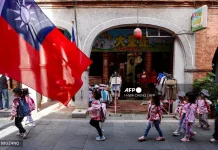The hefty tariff on soybeans from the United States has caused a 17 percent import decrease of the produce into China in February 2019, being the lowest level recorded since 2015, General Administration of Customs – Chinese statistical agency, has revealed.
In 2017, U.S. soybean exports to China reached a volume of US$14.573 billion. Currently, the United States is the world’s largest soybean producer and second largest exporter, after Brazil. On the other hand, China is the world’s largest importer of soybeans – imported 91 million tonnes in 2018 market year as against 94 million tones the previous year.
This suggests that the trade war between the two largest economies has created the opportunity for more than US$2.4 billion market share of soybeans that countries producing it can compete.
Although, imports of soybean to China has reduced by 17 percent, this does not mean that consumption has reduced in similar terms. This suggests the possibility of China looking for alternative markets and countries such as Brazil and Argentina are ready to take some proportion of the 17 percent share created as a result of the tariff hikes.
The United Nations has estimated that of more than US$300 billion of China-US trade that has been hit with new tariffs since July 2018, about US$250 billion is likely to shift to other economies should such countries take advantage.
This presents a perfect opportunity for Ghana to compete for a portion of the US$2.4 billion market share in soybean exports due to some domestic measures that have been laid down in the past decade. Currently, local demand for soybeans accounts for 150,000 metric tonnes whereas imports of the produce amount to 50 percent. What this means is that domestic production of soybeans accounts for about 75,000 metric tonnes.
The figure could be more because it is unclear how much of the produce has been exported. Last year, a sensitization programme carried out by the Ghana Exports promotion Authority (GEPA) revealed that a chunk of Ghana’s exports data declared by freight forwarders are lumped together and classified as “others”, making it difficult to measure export data.
To harness Ghana’s export potentials in soybean production and other agriculture produce, government in 2013 through the Ministry of Trade and Industry (MoTI) proposed a five year development strategy to invest in soybean production as it was identified as a priority area in the Non-Traditional Export (NTEs) sector.
This initiative was under the National Export Strategy (NES) project. The overall objective of the NES was to develop the potential of NTEs sector and make maximum contribution to Gross Domestic Products (GDP).
Aside this project, the Social Enterprise Fund (SEND) Ghana – a non-governmental organization, in 2015 started a strategic mission to increase soybean production in about 130 communities in the Volta Region and some selected areas in northern part of the country. According to the Organisation, the purpose of the project was to introduce the required substances in the soil to improve production of the yield.
Such strategic initiatives have seen upwards surge in soybean production as a number of small holder farmers are benefiting from it despite some challenges facing them. This time could be considered as a perfect opportunity for farmers to cash in regarding export of soybean to China.
This in turn present an opportunity for investors to invest in soybean production due to ready market in China.














